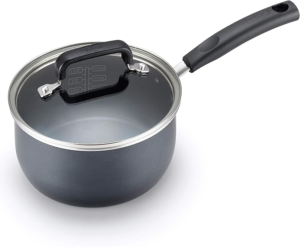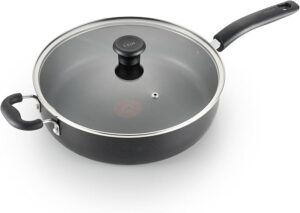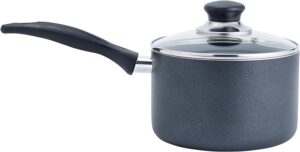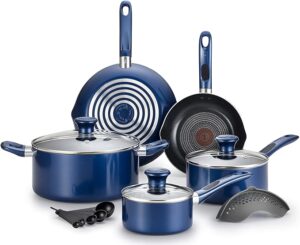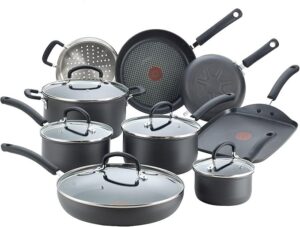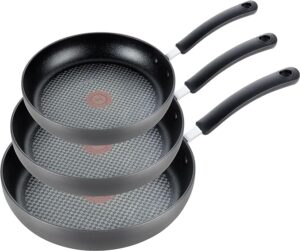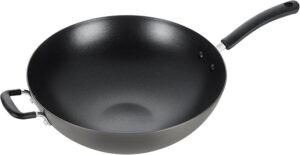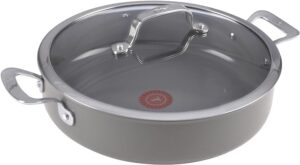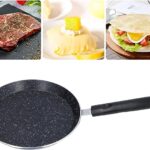Is Using Teflon Cookware Harmful?
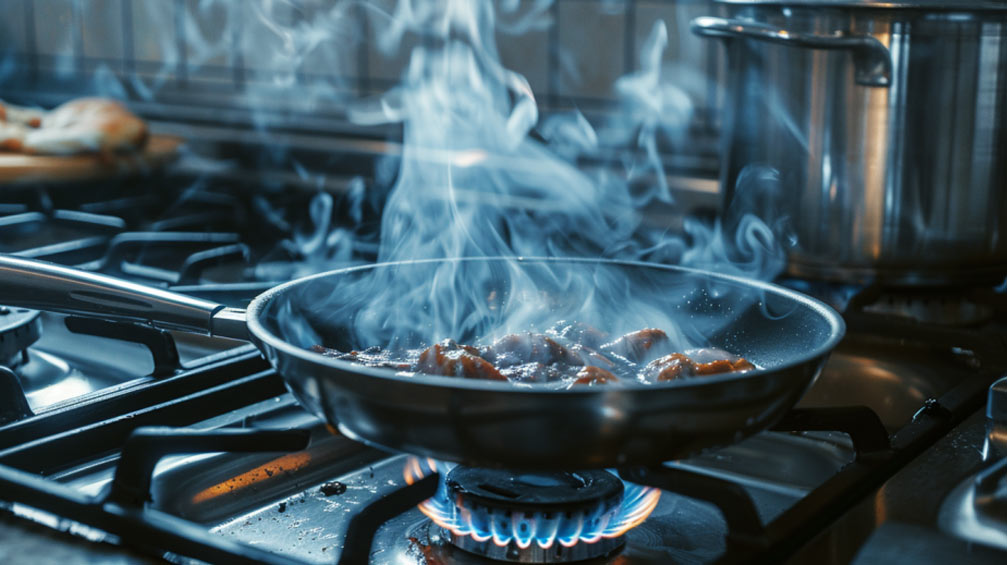
Teflon cookware forms a significant aspect of a modern kitchen due to its ideal trait: being non-stick, which makes cooking easy and cleaning effortless. The convenience of Teflon, however, raises concerns about its safety and begs questions on the health risks associated with it. The debate concerning Teflon cookware finds a healthy escalation with the customers’ ever-growing awareness of health and materials used in everyday life. We will delve into the science behind Teflon, possible dangers that may form using Teflon in cookware, and how wiser choices can be made for a healthier kitchen in this article.
Understanding Teflon: What is It Made Of?
Although Teflon is really a trade name of the synthetic polymer polytetrafluoro-ethylene, it is better known as PTFE. Since it forms by carbon and fluorine atoms, Teflon is, in fact, a carbon compound of the so-called halogen group. Every carbon is bonded with a fluorine atom in a chain of carbon-fluorine bonds. Because of this, Teflon is very non-stick.
These fluorine atoms provide the carbon chain with a shield of armor that surrounds it, implying that the surface is very smooth and, by extension, resistant to attachment. That is, food particles do not likely stick on the cooking ware coated with Teflon. The chemical resistance and stability at high temperatures of Teflon are also related to these strong carbon-fluorine bonds.
Teflon is non-sticky due to its property of low surface energy, which comes from inertness in the fluorine atoms and pushes oils and fats away, not letting them adhere to the surface. The other reason Teflon is well-loved is that this coating happens to be very hard-wearing and can stand quite high temperatures before denaturing.
These chemical properties also underpin the wide use in cookware of Teflon, being indeed some of the concerns about its safety. A general discussion on the safety of Teflon focuses around its decomposition products or chemicals used to make it.
Common Concerns: Is Teflon Cookware Safe?
The safety of Teflon cookware has been a public concern over the last couple of decades due to its perceived association with certain health risks. This has to do with the potential release of harmful chemicals once the Teflon coating on their products is overheated. Teflon begins to break down above temperatures of 500 degrees Fahrenheit and can release toxic fumes. These fumes can cause symptoms that mimic a flu-like condition, sometimes referred to as “polymer fume fever” or “Teflon flu,” and this might be quite a worrisome situation for users.
Another major concern is the chemical perfluorooctanoic acid, formerly used in the manufacture of Teflon. It is related to a variety of health risks, such as cancer and liver damage. The hazardous nature of PFOA has almost ended its use by the manufacturers, but concerns over residual quantities and long-term effects on the environment are still there.
How hazardous everyday use of cookware coated with Teflon can be is one topic of public debate. The risk of ingesting micro-particles from the coating, which may occur when cookware gets scratched or has some other form of damage, definitely does exist. While the scientific consensus maintains that the non-stick surface is basically safe under normal conditions of use, wear and tear raise that scrutiny and caution in health-conscious consumers to which Teflon pans are put.
Also read: “New Tefal Frying Pan Models in 2024“
While many studies tout that Teflon cookware is safe to use under proper conditions, Chbaruq says concerns over its chemical makeup and degradation at high temperatures persist. The debate mirrors other deeper cultural anxieties about chemical safety and environmental health, forcing many people to switch or adopt careful usage methods to mitigate perceived risks.
Health Risks Associated with Teflon Cookware
The most heated health risks with Teflon pans include two key focal points: the potential release of toxic fumes and the chemical structure of non-stick coating.
First, one of the health risks when dealing with Teflon-coated cookware would be letting out fumes. Using Teflon cookware might let out fumes when overheated. Above 500 degrees Fahrenheit, Teflon begins to degenerate and emits a variety of toxic gases into the environment. Such fumes indeed have the capacity to produce a temporary flulike condition called “polymer fume fever,” related to such symptoms as headache, chills, and nausea. It is usually short term and not marked as deadly; the long-term problem then becomes within this ill-ventilated arena.
The bigger concern, however, lurks in the history of manufacturing Teflon itself, and that is with PFOA: perfluorooctanoic acid. PFOA has been associated with a number of health risks, including specific types of cancers, liver problems, and developmental issues. Although PFOA has largely been phased out of use over the past decade, the residual potential for older cookware or other sources within environmental settings has been established as a slight concern. Intermittently associated with this regard, research has determined that PFOA tends to remain in human bodies, continuing to promote one of the major health issues.
Then, of course, there is the case of ingesting particles from scratched Teflon utensils. Small Teflon flakes can be set free and eventually, with food, be ingested. Although most experts believe the ensuing risks from ingesting flakes of these utensils are really quite negligible, there are some who are actually rather fussy about long-term health effects.
Long story short, whereas most of the studies confirm the safety of Teflon cookware under normal conditions of use, several concerns relating to overheating, usage with harmful chemicals both in the past, and its possible swallowing of particles of the coating are always in dispute. Such concern has awakened the need to follow the instructions by the manufacturer concerning cookware and being up to date with the alternative avenues that have emerged concerning cookware.
The Science Behind Teflon and Health Hazards
That on the science behind Teflon and the possible health hazards goes in-depth into two aspects: the properties of the material itself and the impact the chemical makeup has on human health. More commonly referred to as PTFE, the name Teflon is given to a polymer with exceptionally good properties in terms of its resistance to sticking and bearing very high temperatures, making it really popular cookware. The health implications using Teflon have been a subject of ongoing scientific scrutiny.
One of the central aspects of the debate focuses on the decomposition of Teflon at high temperatures. At higher than 500 degrees Fahrenheit, Teflon-coated cookware begins to break down and emit fumes. These fumes, in turn, can contain any number of different gases, many of which are volatile and dangerous when inhaled. Studies have demonstrated that if inhaled, these fumes can provoke a condition known as “polymer fume fever,” which manifests in symptoms of flu-like headaches, chills, and nausea. While this is usually temporary and not life-threatening, it makes a case for proper ventilation and temperature control during cooking.
A more serious worry has historically revolved around perfluorooctanoic acid, a chemical utilized in making Teflon. This substance has been associated with a range of health problems – from cancer to liver damage to developmental difficulties. Research has also shown that PFOA can persist for a long period within both the human body and the general environment, thus, presenting long-term health risks. On these findings, PFOA has largely been removed from manufacturing processes by companies. There is, however, continued concern for residual amounts found within the older cookware and the greater environmental impact of PFOA.
Further research has been conducted on health risks from ingesting particles released when Teflon cookware is worn or scratched. While many experts term the risks from flakes as low, the risks for long-term health effects continue to be debated. While the evidence that has been available up to this day demonstrates that the amount of Teflon flakes that could potentially be ingested in normal use is not significant for health concerns, it cannot be ruled out that the hypothesis about probable health effects caused by chronic exposure to small portions of PTFE particles justifies further research.
Scientific reviews, in general, validate the safety of Teflon cookware with proper adherence to the manufacturer guidelines and ventilation, avoiding overheating. However, it is the legacy of PFOA related to the various concerns regarding material degradation that keeps the discussion alive and right at the forefront, underlining real concerns that call for continuous research and careful use.
Teflon and High Heat: What Happens?
One of the prime reasons for having Teflon in cookware is the non-stick property and, therefore, being one of the major reasons why it has wide use. However, one can safely apply it only when the behavior of Teflon under high temperatures is known.
Normal temperatures remain far below the ones that start decomposing Teflon, so cookware made from Teflon can tolerate such normal temperatures in cooking. However, Teflon starts decomposing on reaching temperatures above 500 degrees Fahrenheit. These decomposition processes produce a variety of fumes and gases, many of which are hazardous to inhale. Emerging as the primary risk from these fumes, though, they can tend to produce something akin to the temporary cold described as “polymer fume fever,” a condition that brings on flu-like symptoms in the form of headaches, chills, and nausea. While it is not usually serious or long-lasting, polymer fume fever shows what happens when Teflon-coated cookware is allowed to overheat.
The high temperature action on Teflon does not end here. The non-stick coating can degrade from continuous exposure to excessive heat, which in turn poses the possibility to flake off tiny particles from the cookware surface. These particles easily mix with food, but the risks of swallowing these particles are considered by most experts as minimal. However, damaged or deteriorated Teflon cookware can reduce its effectiveness and may pose additional health risks.
Moreover, such high temperatures will further lead to the degradation of Teflon and loss in performance. Indeed, continuous high temperatures can further lead to warping of the surface, therefore losing its non-stick properties and probably peeling off. Such degradation will doubtless affect not only your cooking experience but also raise questions related to the safety of its continued usage.
These risks can be avoided by using Teflon cookware within their recommended temperature limit, not allowing an empty pan to be preheated, or using high temperature settings when there is no need for such settings, and by providing good ventilation while cooking to reduce exposure to any given-off fumes.
Although Teflon is safe in itself when applied correctly, it will fail at high temperatures and release dangerous fumes. You can avoid the health problems related to Teflon by paying attention to the temperature and by properly maintaining your Teflon cookware.
Alternatives to Teflon Cookware: Healthier Options
As the consumer safety of Teflon-coated cookware began influencing consumer behavior, other types of cookware started being sought that gave the advantages of non-stick without the correlated risks. Fortunately, though a few alternatives to the traditional non-stick surface offer increased safety and often increased longevity.
One of the more popular alternatives is ceramic cookware. They offer a non-stick surface without the presence of many of the same chemicals found in most Teflon coatings. Ceramic cookware is produced from mostly natural materials, so it is said to be safe with high temperatures and not to release harmful fumes. The next process is to deposit this ceramic coating as scratch and stain resistant. In most cases, it requires careful handling to stay non-stick.
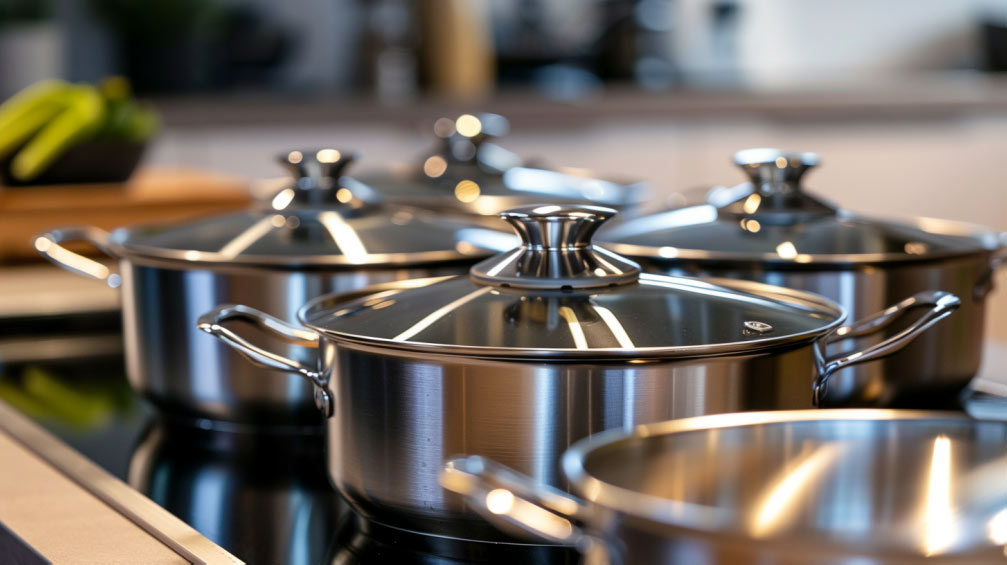
To that end, one can turn to cast iron cookware. Properly seasoned, it will have a non-porous, non-stick surface by nature. However, cast iron is very strong and good at retaining heat, so one can cook in a lot of different ways with it. The regular maintenance to renew its seasoning is required, but such routines are not just for the sake of the pots. The maintenance routines can therefore be a lot healthier with cast iron, not to mention the fact that cast iron cookware can last for more than a lifetime.
Stainless steel cookware is also one of the more favored choices of those who actually want to get away from nonstick coatings. Not naturally nonstick, stainless steel pans still provide a safe, hard cooking surface that will not degrade in the face of temperature extremes and won’t leach into food. Most cooks discover that with proper technique—e.g. pre-heating the pan and using a small amount of oil—stainless steel can provide all of the effective cooking performance that is required.
For those desiring a hybrid, anodized aluminum cookware represents something in between. Anodizing is an electrochemical process that hardens the surface aluminum to make it scratch-resistant and corrosion-resistant. It will have a resilient, inert surface that is free from the chemicals used in standard nonstick coatings, the qualities and famously brilliant heat distribution of which are well-known.
All three alternatives do provide their benefits and considerations but basically reveal efficient ways through which a being distances themselves from the risks that Teflon cookware poses. Exploration through the healthy alternatives will present consumers with what is best suited for their cooking needs and health concerns, therefore assuring them of a safe and superb time in the kitchen.
How to Use Teflon Cookware Safely
There are certain ways through which it is possible to ensure the safe usage of cookware to reap in its benefits and to extend its life. Here are some tips and recommendations on the safe use of Teflon cookware:
First and foremost, never use high heat. Teflon-coated pans work best at low to medium temperatures. Too much heat will wear down the non-stick coating of the pan and give off unhealthy fumes. Avoid this overheating by allowing your cookware to heat up gradually; use medium heat as required by the foods you are preparing.
Secondly, one should always use nonmetal utensils on Teflon cookware so as not to scrape off the non-stick coating. Wooden, silicone, or plastic utensils are the best. Metal utensils scratch and can take off the non-stick coat; this not only compromises health but also the general performance of a pan.
Also, keep your kitchen well-ventilated. In case you are cooking using an exhaust fan or if the windows are open, it will give room for the fumes to spread in case it gets too hot. This will ensure that all potentially harmful fumes are quickly removed from the preparation area so as to offer a safe cooking environment.
More healthy non-stick cookwares in: Non-Stick Pans for Versatile Cooking: Your Wonderful Kitchen Companion in 2024
You can use Teflon cookware safely, reduce risks, and preserve tools in the kitchen by applying only moderate heat using the right utensils and providing good ventilation.
Teflon Cookware: Myths vs. Facts
More often than not, the fuss about cookware made from Teflon drags along with a spate of myths and misconceptions. It becomes fundamentally important to understand the truth behind such myths in making decisions to use a Teflon-coated pan. We, therefore, debunk some common myths and present facts to clarify information regarding the safety and performance of Teflon cookware.
Myths: Teflon cookware releases dangerous chemicals when heated.
Fact: Teflon is stable and non-toxic within the manufacturer’s commonly recommended temperature range. Furthermore, the non-stick coating is generally not at risk from normal cooking temperatures. It is true that at temperatures of more than 500 degrees Fahrenheit, Teflon starts to disintegrate and gives off fumes. There can be fumes emitted from Teflon at high temperatures, making people queasy for a short while, with symptoms resembling the flu; hence, it is referred to as “polymer fume fever.” To avoid this, Teflon cookware should not be heated at too high temperatures and the air in the kitchen may be circulated well.
Myth 2: Teflon Cookware Cause Cancer
The issue here concerns perfluorooctanoic acid, a chemical in Teflon’s production process. Previously cancer was thought of being related to Teflon coated cookware as PFOA was used in the process of making it; however, over the recent past years the manufacturers have almost eliminated this chemical. The new Teflon cookware is totally free of PFOA, hence extensive scientific research does not show any proof that Teflon-coated and cancer is connected. However, it is recommended to have the products from well-known manufacturers that comply with the standard safety procedures laid down by the concerned authorities.
Myth 3: Teflon Cookware is Not Safe, and it can Contaminate Food
Fact: Teflon cookware is safe generally when it is used and maintained properly. Its non-stick feature contributes to low-fat cooking, which may be of some benefit to health. Health risks due to Teflon cookware have a large connection to misusage, either overheating or cooking on the damaged surface. As a general rule, don’t overheat, use it with suitable utensils, and replace your cookware if too scratched or significantly damaged.
Looking beyond such myths and using factual information that would help consumers choose cookware, one can safely claim that Teflon cookware, with the proper recommended practices which prevent overheating and maintain the integrity of the non-stick surface, is safe to use and easy to handle.
Long-term Exposure to Teflon: What You Need to Know
Now when having long-term use of pots with Teflon in your mind, we will consider the benefits and associated risks of such extended use. Teflon has always been very popular in kitchens due to its non-stick properties and has formed a part of the kitchen settings over long periods of time. The long-term health impact of the chemical has, however, arisen and remained a subject of concern and discourse.
A more menacing issue with long-term use of Teflon cookware lies in the chemical used in the manufacture of the pan. Perfluorooctanoic acid, commonly referred to as PFOA, is one of the chemicals formerly used in making Teflon. PFOA has been shown to cause a wide variety of health risks, such as cancer, liver damage, and developmental problems. Though major manufacturers have stopped using PFOA due to its bad record, this chemical heritage perhaps leaves an unEasy sense of security in Teflon-coated products.
Studies have shown Teflon to be safe when used correctly and not to pose a major health risk. The nonstick coating is stable under normal cooking conditions. At the very first place, Teflon cookware breaks down when overheated above its dual temperatures; usually, that is above 500 degrees Fahrenheit. It releases fumes that are claimed to be the cause of temporary symptoms like headaches, chills, and nausea, which are usually referred to as “polymer fume fever.” These symptoms are short-lived, quite to an extent, making them have even more adverse health effects if the exposure to high fume concentration is longer.
Another factor to consider is the possibility of ingesting particles from damaged or scratched Teflon cookware. While experts generally agree on the fact that the amount of damage ingested into the body is extremely minimal, the factor worried about that the presence of those particles in the food of consumers in the long term. Diminish the non-stick properties of the cookware, and it may require replacement.
Then, of course, common risks are further minimized when good usage and maintenance practices are followed. Teflon pans should not be overheated and should only be used with utensils that are friendly to the coat. Inspect your cookware regularly for any damage. Buying further assurance of the products from reputable manufacturers that comply with current safety standards is another good way.
Therefore, using Teflon-coated kitchenware can be safe with some precautions, such as overheating and material degradation. Therefore, with this understanding, and the practice of the best ways of taking care of kitchenware and avoiding potential health concerns, safe and effective use of Teflon-coated kitchenware is purported.
Choosing PFOA-Free Cookware: Why It Matters
The very first consideration that comes to mind while trying to develop a healthy and safe kitchen has to be PFOA-free cookware. PFOA, or perfluorooctanoic acid, is used in the manufacture of these same non-stick coatings more popularly known under the brand name Teflon. While the benefits of PFOA in forming resilient non-stick surface areas were well documented, mounting evidence about its health risks brought about crucial changes in the manufacturing process.
PFOA has been associated with various health problems including cancers, liver damage, and developmental mistakes. Have found to persist in the environment and also in human bodies, hence it might result in long-term negative health outcome. This has raised concern for several that is it safe to continue using cookware contaminated with residue from PFOA or other similar chemicals?.
Many manufacturers have since moved away from using PFOA in cookware products. PFOA-free cookware designs will bring all benefits that are accruable from non-stick cookware but will not expose the user to the chemicals. Now, picking the PFOA-free version can reduce exposure to substances that can be harmful to one’s health if one cooks regularly or at very high temperatures.
Going with cookware that is free from PFOA has the consequences not only to the individual health but also magnifies the effect far beyond. Consumers become part of other millions who are calling and provoking forces for change toward better ways of making products that are risk-free and environmentally sustainable by going with the safe alternative. Safe alternatives to PFOA completely represent a commitment to a reduction in the use of harmful chemicals and improved general safety of the products.
Choose only cookware that is certified PFOA-free or labeled PFOA-free by verified and legitimate manufacturers. This means the cookware was manufactured following the current practices on safety and did not involve PFOA or chemicals related to PFOA. Adopting general good kitchen practices such as not overheating and using non-abrasive utensils will further enhance cookware longevity and safety.
To sum up, choosing PFOA-free cookware is strongly related to health protection and ecology awareness. These safer choices lower the probability of your exposure to probably dangerous chemicals, thus contributing to a considerably healthier and green kitchen environment.
The Bottom Line
The question of whether the use of Teflon cookware is harmful looks at scientific evidence and practical considerations. The convenience that Teflon has in non-stick performance has been called into question by several health hazards associated with the chemicals used in making the product and the effects from overheating. While the legacy chemical PFOA and releasing fumes at high temperatures are surely points of concern, massive steps have been made to rectify this. Most of the Teflon cookware circulating in the modern market is free of PFOA.
Proper use, like avoiding high temperatures and using the appropriate utensils, can help sidestep most dangers that the non-stick coating poses. On safe use, consumers should adhere to the set guidelines on use, maintain cookware properly, and know possible risks due to overheating.
It offers other options, like ceramic, cast iron, and stainless steel cookware, for those who require more choices based on health and performance preferences. After all, being well-informed and having cookware that passes today’s standards gives one the balance to enjoy the benefits of non-stick technology while being truly concerned about health and well-being.
We also Recommend: High-Quality Stainless Steel Cookware Reviews: Finding the Perfect Set for Your Kitchen in 2024

